S’pore’s first seagrass restoration project aims to raise survival rate of carbon-storing plant
Sign up now: Get ST's newsletters delivered to your inbox

Researchers studying seagrass meadows. Singapore’s waters are home to 12 species of seagrass, the oceans’ only flowering plant.
PHOTO: NPARKS
Follow topic:
SINGAPORE – Seagrass meadows, the often-overlooked, carbon-storing sibling to mangroves, are set for a revival along Singapore’s coasts.
On Sept 27, the National Parks Board (NParks) and OCBC Bank said they will embark on Singapore’s first seagrass restoration project, with a focus on understanding the plants’ reproduction and finding ways to improve the success of transplanting seagrass at locations in decline.
OCBC has pledged close to $1 million to fund this three-year research effort, which will be helmed by NParks, the St John’s Island National Marine Laboratory and the National University of Singapore.
The reproductive characteristics of tropical seagrass have been largely under-researched in South-east Asia, NParks said in a statement.
Singapore’s waters are home to 12 species of seagrass, the oceans’ only flowering plant.
Seagrass meadows are found in shallow waters off the coasts. In the north, they are found near mangroves, while in the south, they are found near coral reefs, predominantly around the Southern Islands.
The largest continuous stretches of seagrass meadows are found at Chek Jawa and Cyrene Reef, a submerged reef off Pasir Panjang Terminal.
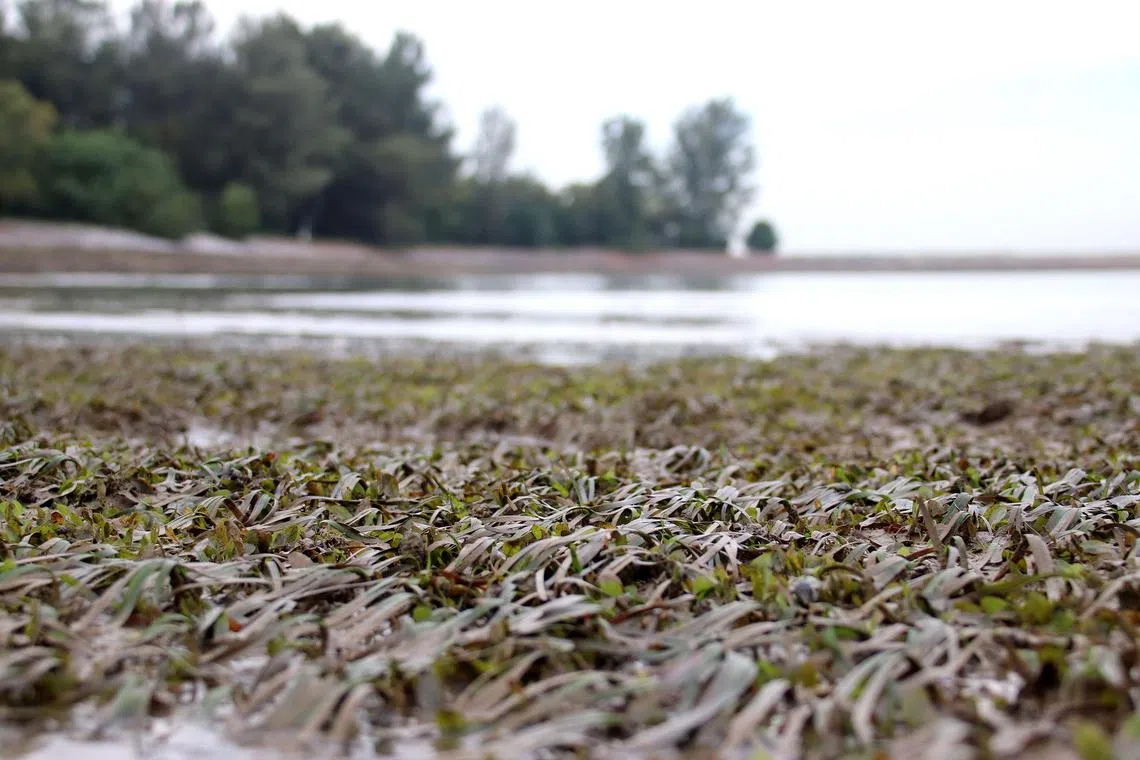
Singapore’s waters are home to 12 species of seagrass, the oceans’ only flowering plant.
PHOTO: NPARKS
In recent years, seagrass has been held in higher regard globally due to its ability to store carbon in the soil. The submerged plant can soak carbon up to 40 times more effectively than forests and store up to 18 per cent of oceanic carbon.
But more than 45 per cent of Singapore’s original seagrass cover has been lost to coastal development and reclamation over the last five decades.
These underwater fields are nurseries for juvenile fish, while serving as habitats for sea stars, seahorses, crabs and sea cucumbers, among other marine life.
Seagrass is also a key food source for sea turtles and critically endangered dugongs, which are occasionally spotted in the southern waters and Johor Strait.
In the project, researchers will experiment with innovative ways to transplant and anchor seagrass in Singapore’s coastal waters to find out which restoration techniques will work best.
This will help improve existing planting methods, which tend to have low success rates due to a lack of understanding of the factors affecting seagrass survival in challenging underwater conditions, such as those of Singapore’s waters, said NParks.
For example, conventional methods include taking a sand core containing some seagrass and transplanting it at another site. However, Singapore’s waters can be turbid, with some areas experiencing stronger currents, affecting the sediment’s stability and causing transplanted seagrass to be washed away.
To address this, scientists will use biodegradable mats made of calcium carbonate and coconut fibre to anchor transplanted species and stabilise the sediment.
“We also want to understand how we can improve the survivability of the restored seagrass. There is no point putting it out if they’re all going to go away within the next few months. You want them to persist, thrive and sequester carbon and bring back biodiversity,” Dr Samantha Lai, deputy director of biodiversity (coastal and marine) at NParks’ National Biodiversity Centre, said at the project’s launch at Fort Canning Centre on Sept 27.
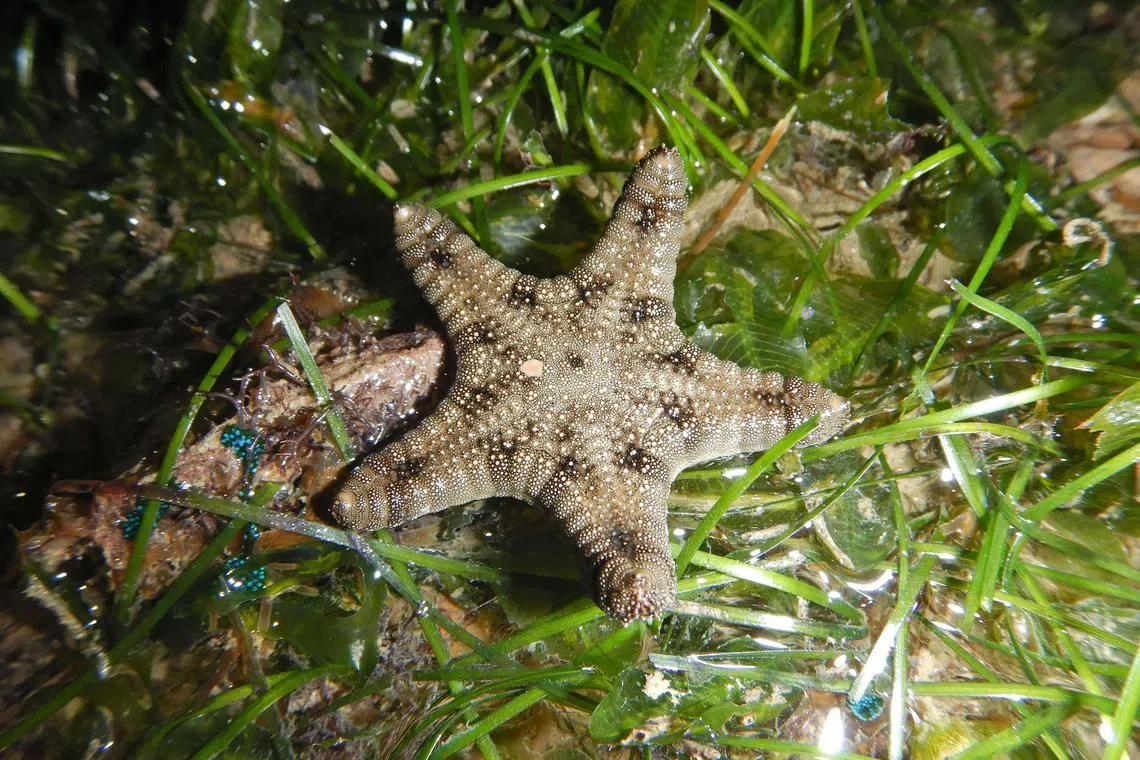
A biscuit sea star nestled in a bed of seagrass.
PHOTO: NPARKS
Dr Siti Maryam Yaakub, senior director of the International Blue Carbon Institute, said: “Site and species selection are very important when considering seagrass restoration.”
The aim is to start restoring seagrass meadows within the first year of the project so there is time to track their progress. Suitable locations have not been pinned down yet.
One method of restoring seagrass meadows is by transplanting entire plants, which involves taking seagrass shoots from a healthy meadow and planting them on the restoration site.
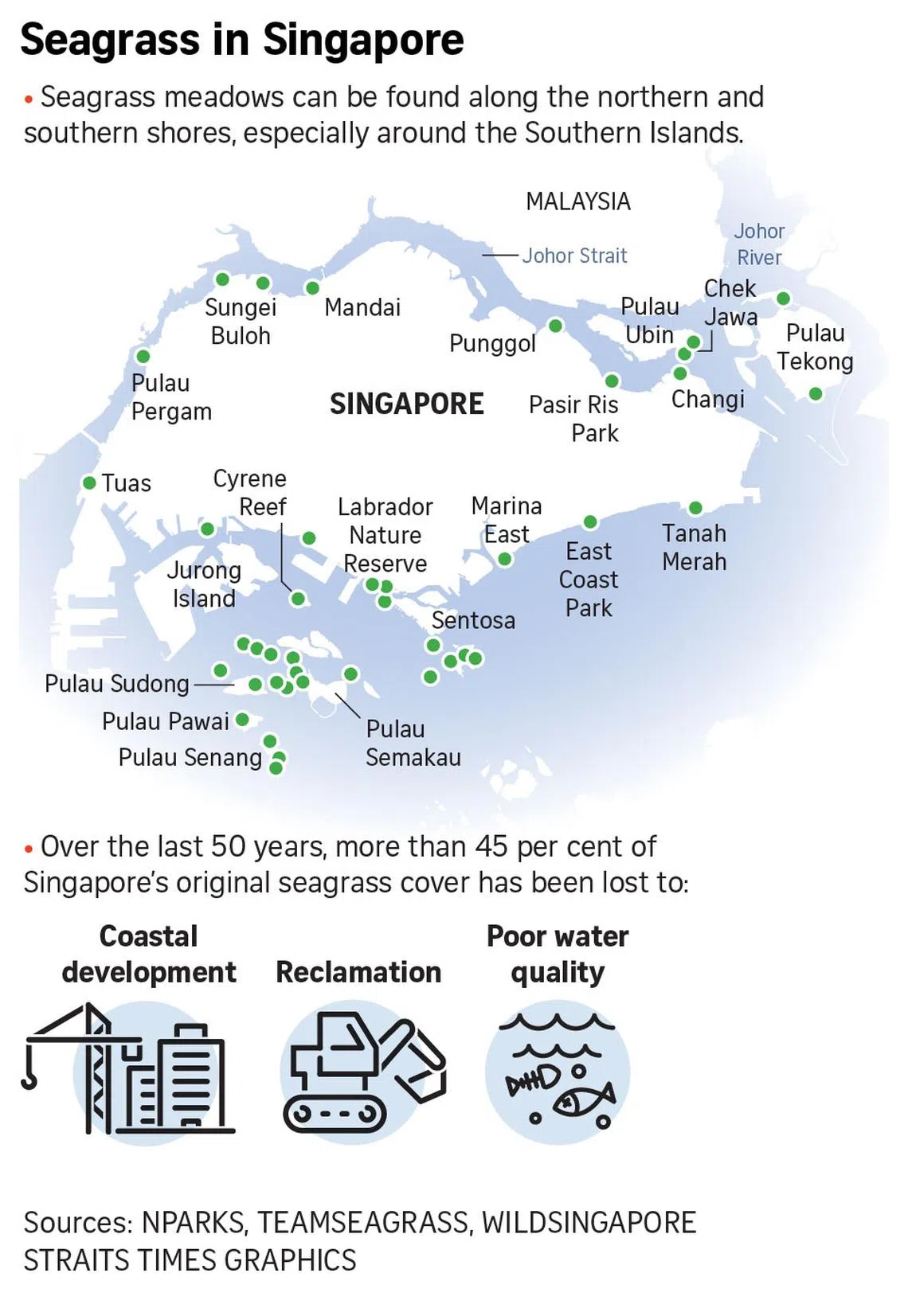
Another method involves sowing seeds into the sand, which is cost-effective and easier to scale up. But as the seed production of local seagrass species is not well known, researchers will do aquarium experiments to trigger the flowering of seagrass species.
“By triggering this flowering, hopefully we can collect the seeds, germinate them for growth and study their survivorship. And then with time... we can scale up our seagrass restoration through seed-based transplantation,” said Dr Lai.
The project requires more hands on deck and, over the three years, members of the public and OCBC staff will be invited to help with parts of it. These include surveying existing meadows to understand the seagrass’ flowering and fruiting patterns, and carrying out transplanting at restoration sites.
Singapore’s plans to restore seagrass comes weeks before the COP16 UN biodiversity summit in Colombia.
Under the Kunming-Montreal Global Biodiversity Framework, a UN pact cemented in the previous summit of 2022, governments were urged to restore nature.
Creatures that rely on seagrass
1. Dugongs
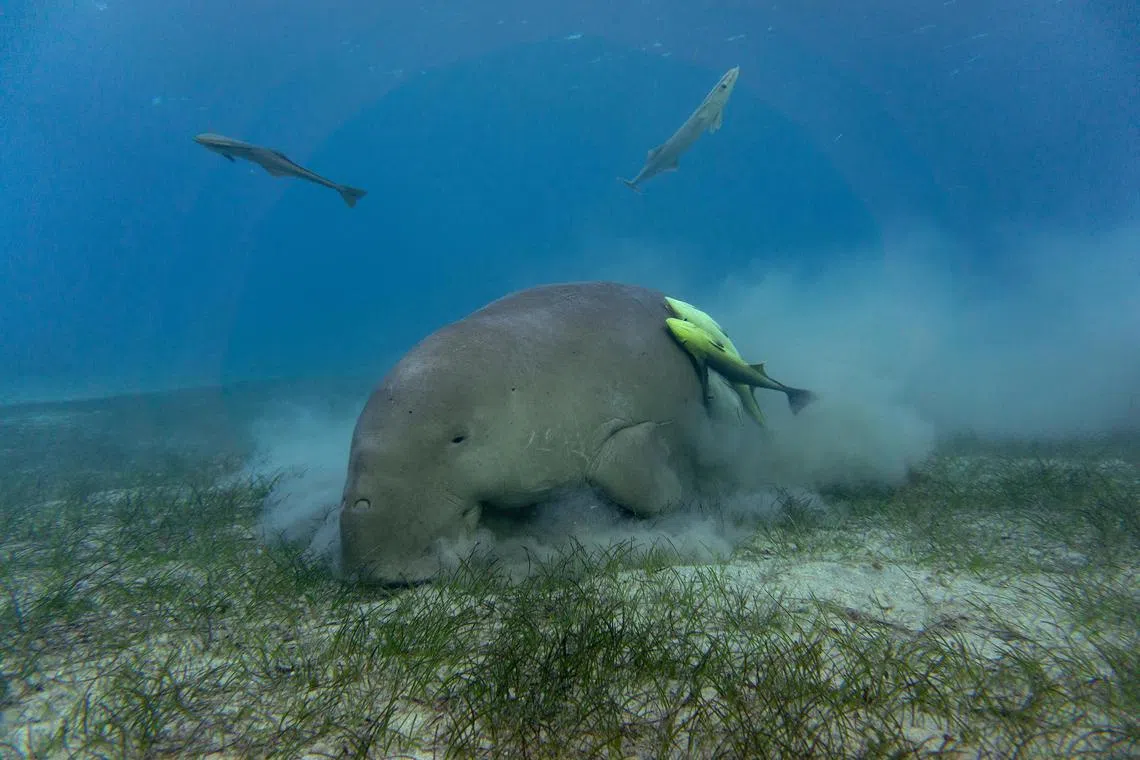
Dugong feeding on seagrass.
PHOTO: ADOBE STOCK
Seagrass is a key food source for the critically endangered dugongs. When the mammals pay a visit, they leave grazing trails along meadows.
A 2022 study found that they tend to frequent the eastern end of the Johor Strait, around Changi Beach, Pulau Tekong and Pulau Ubin.
2. Feather star

A feather star found on Cyrene Reef.
PHOTO: DAVID LANE
The dazzling feather star, which comes in varying colours and patterns, is one of the more flamboyant dwellers of the sea.
3. Orange striped hermit crab
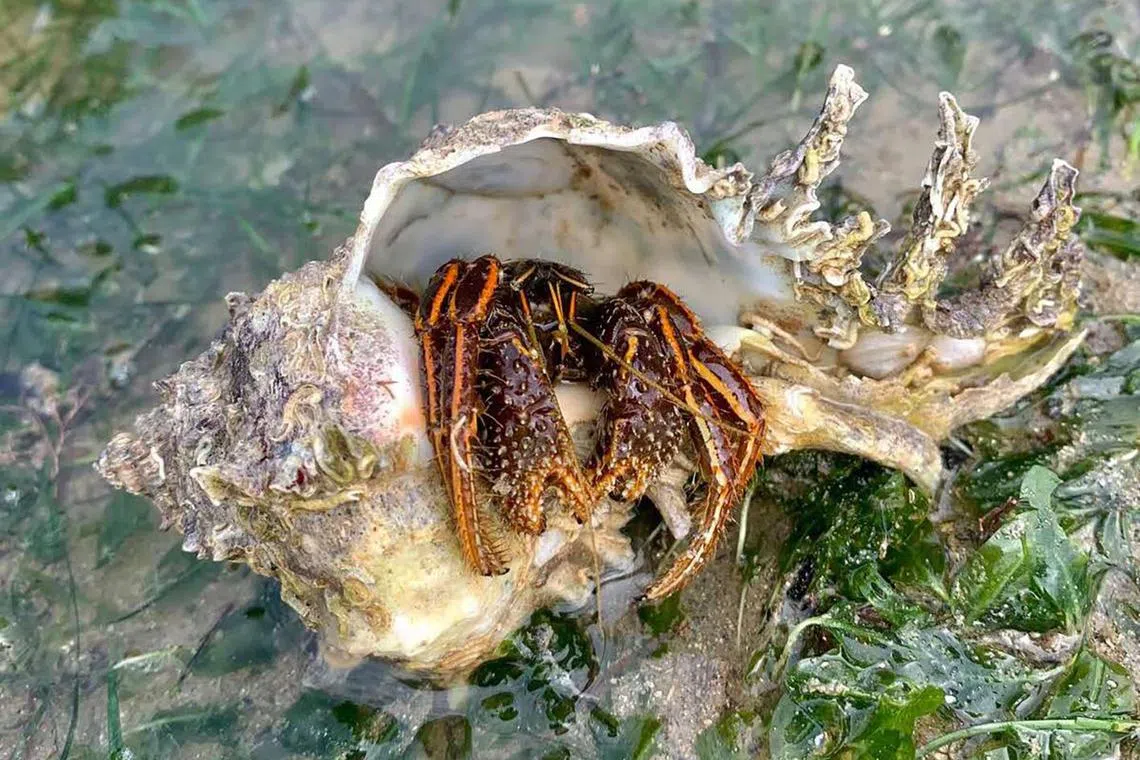
Orange striped hermit crab.
PHOTO: NPARKS
Identified by its striking legs, this hermit crab is a common resident of Singapore’s shores.
Notable seagrass species
1. Spoon seagrass
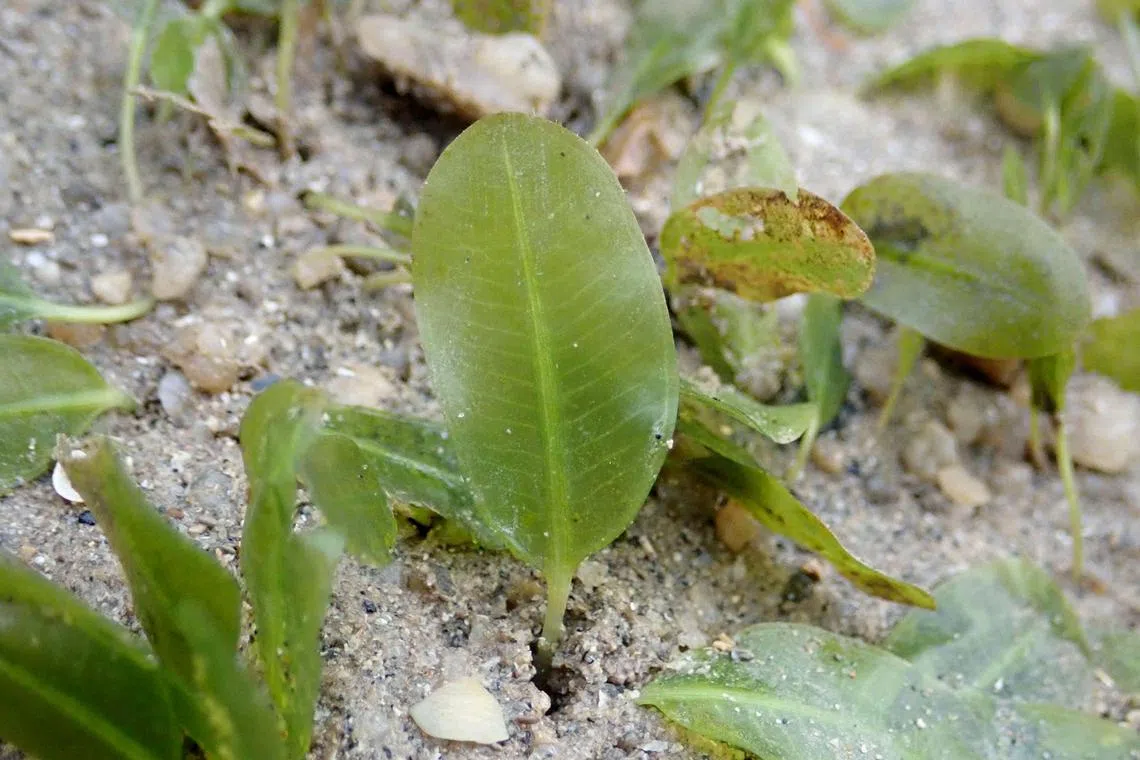
Spoon seagrass.
PHOTO: NPARKS
It is the most commonly encountered and widely distributed species.
2. Smooth ribbon seagrass
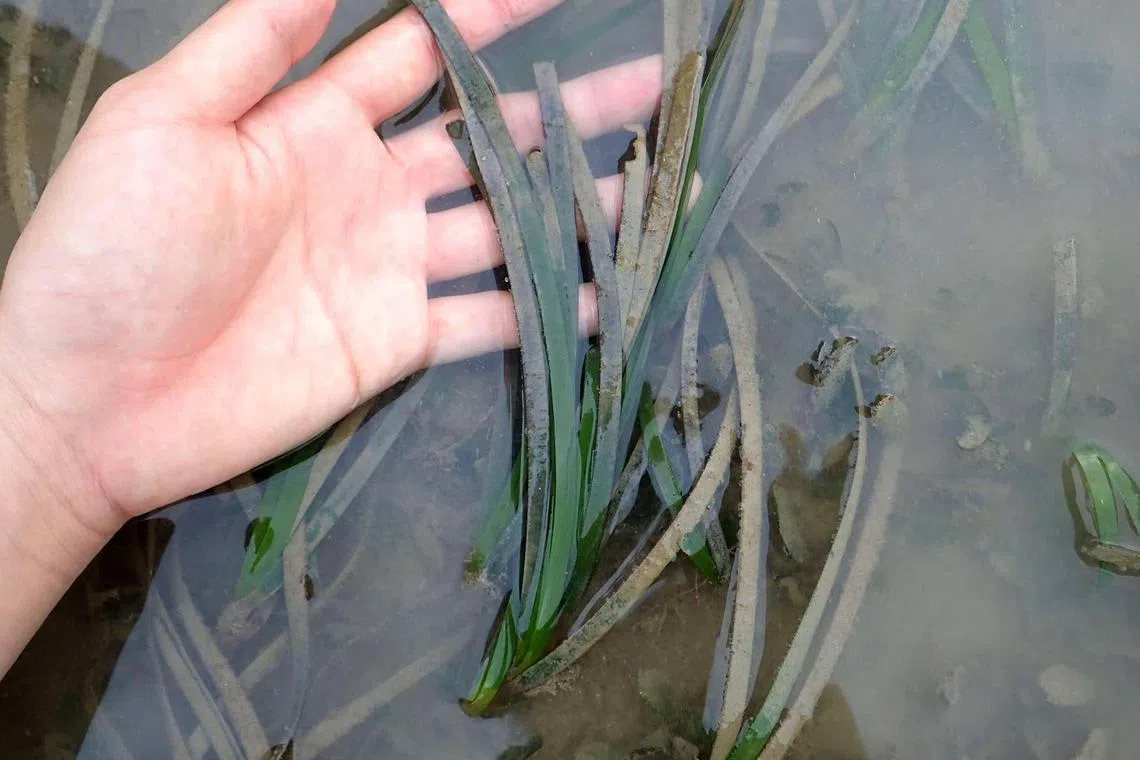
Smooth ribbon seagrass.
PHOTO: NPARKS
Easily mistaken for seaweed, this species has been found at Cyrene Reef, Chek Jawa and Tanah Merah.


